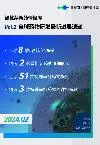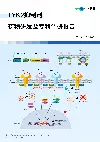Study Finds Eyenuk Artificial Intelligence Detects Diabetic Retinopathy with Far Greater Sensitivity than Ophthalmologists' Dilated Exams
2022-09-30
Academic leaders will review their experience with the technology during a symposium at AAO 2022, the American Academy of Ophthalmology annual meeting
CHICAGO, Sept. 30, 2022 /PRNewswire/ -- From the American Academy of Ophthalmology's 126th annual meeting (AAO 2022), Eyenuk, Inc. a global artificial intelligence (AI) digital health company and the leader in real-world applications for AI Eye Screening, announced the publication of strong EyeArt® validation results in Ophthalmology Science, a peer-reviewed journal of the American Academy of Ophthalmology.
Continue Reading
The study, titled "Artificial Intelligence Detection of Diabetic Retinopathy: Subgroup Comparison of the EyeArt System with Ophthalmologists' Dilated Exams," evaluated general ophthalmologists, retina specialists, and Eyenuk's EyeArt AI system for detecting diabetic retinopathy (DR), a leading cause of blindness among working-age adults.
The EyeArt AI system did not miss any vision-threatening DR, although general ophthalmologists missed a few instances.
Tweet this
Professor Jennifer I. Lim MD, Vice Chair of Ophthalmology, UIC Distinguished Professor of Ophthalmology and Director of the Retina Service at The University of Illinois at Chicago and the first author on the publication commented on the results, "As compared to the Reading Center grading, which was the reference standard, the sensitivity for detection of more than mild DR was significantly greater with the EyeArt AI system than with either a general ophthalmologist or a retina specialist clinical examination. Unlike a few instances in which general ophthalmologists missed some cases of vision-threatening diabetic retinopathy, the EyeArt AI system did not miss any cases of vision-threatening DR. The AI system is a significant tool to help us tackle the burden of DR screening and detection of DR in a timely manner."
The study evaluated the sensitivity and specificity of the EyeArt system and dilated eye exams performed by general ophthalmologists and retina specialists against the rigorous Early Treatment Diabetic Retinopathy Study (ETDRS) clinical reference standard on the same cohort of 521 study participants. The ETDRS reference standard was established by experts at the University of Wisconsin Reading Center using 10 fundus images per eye captured after dilation by certified photographers, whereas the EyeArt system only analyzed 2 images per eye, typically without dilation.
Sensitivity, a measure of safety (percentage of patients with disease identified correctly), was 96.4% for the EyeArt system in identifying more than mild DR (mtmDR), while that of ophthalmologists' dilated exams was 27.7% on the identical cohort of study participants. Specificity, a measure of effectiveness (percentage of patients without disease identified correctly), was 99.6% by ophthalmologists' dilated exams compared to 88.4% with the EyeArt system. This result demonstrates that dilated exams by ophthalmologists are better at ruling out disease as evidenced by their high specificity. However, the EyeArt system, with its excellent sensitivity, is much better at identifying patients with disease (at the frontlines of care), a critical factor for a screening scenario in which patients are being identified for referral and further evaluation.
The study also reported that the EyeArt system generated actionable results for more than 97% of eyes with most (85.3%) not requiring dilation. In contrast, dilated exams provided actionable results for 99.9% of eyes but required all patients to be dilated.
Lim and co-authors concluded the paper by stating that, "Given the current low rate of compliance with the recommendation for an annual diabetic retina examination, this system can be a useful adjunct in the detection of mtmDR and appears to be more accurate than clinical ophthalmoscopy for routine retinal screening."
Since FDA clearance in 2020, the EyeArt system is now being used in over 200 locations in 18 countries, including 14 U.S. states, to screen over 60,000 patients and counting. It is the first and only technology to be cleared by the FDA for autonomous detection of both referable and vision-threatening diabetic retinopathy.
AAO 2022 Symposium to Review Real-World Results of EyeArt Use
Eyenuk will showcase its industry-leading AI technologies for diabetic eye screening at AAO 2022. On October 2nd, Eyenuk AI technologies will be featured in a live AAO Industry Showcase symposium titled "Health System Adoption of FDA-Cleared AI Technology for Diabetic Retinopathy Screening in Primary Care."
Symposium speakers are:
R.V. Paul Chan MD, MSc, MBA, FACS, Chair, Department of Ophthalmology and Visual Sciences, University of Illinois at Chicago
Eric D. Hansen MD, Assistant Professor of Ophthalmology and Visual Sciences, University of Utah
Jeffrey D. Henderer MD, Chair, Department of Ophthalmology, Lewis Katz School of Medicine at Temple University
Steven Yeh MD, Chair and Director, Retina and Uveitis, University of Nebraska Medical Center
The AAO Industry Showcase symposium will be held on Sunday, October 2nd at 2:10pm CT, at McCormick Place (booth #1026). From October 1-3, AAO 2022 attendees can see a demonstration of the EyeArt AI System and other Eyenuk technologies by visiting booth #2033.
About the EyeArt AI System
The EyeArt AI System provides fully automated diabetic retinopathy (DR) screening, including retinal imaging, DR detection based on international clinical standards and immediate reporting, in a single office visit during a diabetic patient's regular exam. Once the patient's fundus images have been captured and submitted to the EyeArt AI System, the DR detection results are available in a PDF report in less than 30 seconds.
The EyeArt AI System was developed with funding from the U.S. National Institutes of Health (NIH) and is validated by the U.K. National Health Service (NHS). In addition to U.S. Food and Drug Administration (FDA) 510(k) clearance, the EyeArt AI System has CE marking as a class 2a medical device in the European Union and a Health Canada license. It is designed to be General Data Protection Regulation (GDPR) and Health Insurance Portability and Accountability Act of 1996 (HIPAA) compliant.
The EyeArt System is reimbursed by government and private payors in the U.S. under the newly created Current Procedural Terminology (CPT) code 92229. Medicare started its national coverage for CPT 92229 on January 1, 2021.
VIDEO: Learn more about the EyeArt AI System for Autonomous Detection of Diabetic RetinopathyRetinopathy
About Eyenuk, Inc.
Eyenuk, Inc. is a global artificial intelligence (AI) digital health company and the leader in real-world AI Eye Screening for autonomous disease detection and AI Predictive Biomarkers™ for risk assessment and disease surveillance. Eyenuk is on a mission to screen every eye in the world to ensure timely diagnosis of life- and vision-threatening diseases, including diabetic retinopathy, glaucoma, age-related macular degeneration, stroke risk, cardiovascular risk, and Alzheimer's disease. Find Eyenuk online on its website, Twitter, Facebook, and LinkedIn.
Eyenuk, Inc. Contact
Frank Cheng, President & CCO
[email protected]
+1 818 835 3585
Media Contact
Todd Stein
[email protected]
+1 510 417 0612
更多内容,请访问原始网站
文中所述内容并不反映新药情报库及其所属公司任何意见及观点,如有版权侵扰或错误之处,请及时联系我们,我们会在24小时内配合处理。
靶点
-药物
-立即开始免费试用!
智慧芽新药情报库是智慧芽专为生命科学人士构建的基于AI的创新药情报平台,助您全方位提升您的研发与决策效率。
立即开始数据试用!
智慧芽新药库数据也通过智慧芽数据服务平台,以API或者数据包形式对外开放,助您更加充分利用智慧芽新药情报信息。





